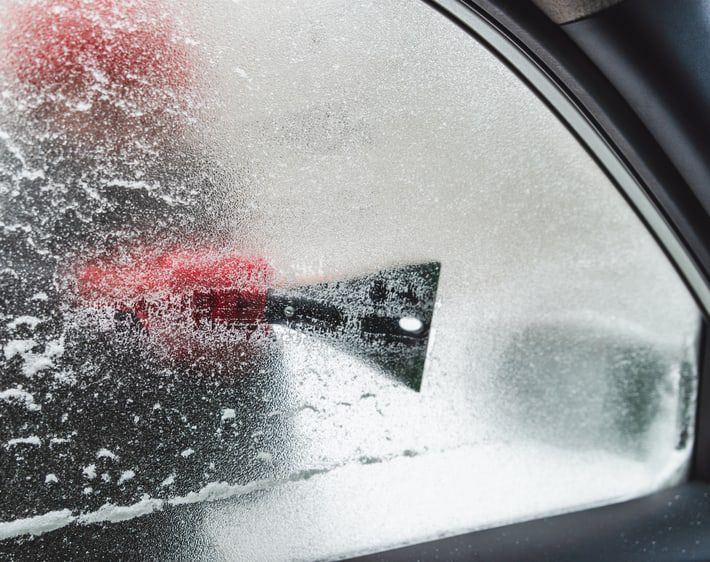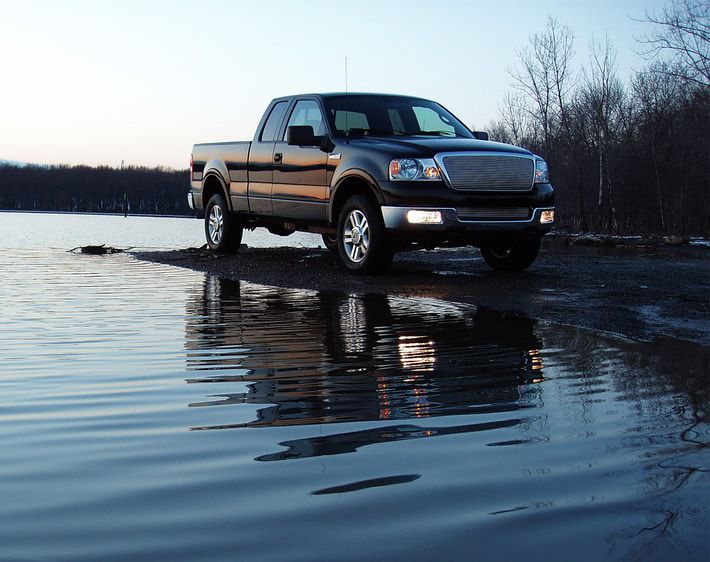When the cold weather sets in, you might notice your car starting to act a bit out of sorts. That's because low temperatures can interfere with the complex systems, parts, and connections that work together to get (and keep) your vehicle moving. Metal parts can constrict and shrink, fluids can freeze, expand, and contract, and rubber seals, gaskets, and belts may become stiff and brittle.
When strange things begin happening to your car in the cold, the first step in finding a solution is to understand the cause! Here’s a list of common cold-weather car problems, the reasons behind them, and some cold weather car maintenance tips to keep your vehicle running all winter long.
1. Freezing Engine Fluids
When the temperature outside gets cold enough, you might notice a few things happen to your car's fluids. For instance, your motor oil, transmission fluid, and antifreeze can become thicker and slower moving. This can make starting the engine, as well as driving in general, feel sluggish.
When oil thickens in response to cold temperatures, it has trouble circulating. This forces the oil pump to work harder than usual. If you suspect your car is struggling due to thickening engine oil, switching to a lower viscosity oil (e.g., going from 10W-30 to 5W-30) or using synthetic oil can help. If you’re not sure which type of oil is best for your vehicle and your city’s driving conditions, come into your local Tires Plus for an expert opinion!
Transmission fluids are also critically important. When they aren't flowing effectively, the transmission will not operate correctly, and your vehicle will struggle to switch gears. If your transmission fluid is too cold, you might not even be able to move at all!
Despite its name, even antifreeze, or engine coolant, can freeze up in the wintertime. If the engine coolant freezes, your engine won’t be able to maintain an optimal operating temperature. Plus, the frozen liquid can crack and damage your radiator hoses in the process!
2. Dying Car Battery
Your battery can suffer in the cold, too. The lower the temperature, the more difficult it is for the battery to give off enough of a charge to start your car. Jumper cables can be a quick fix for getting your car started and everything warmed up, but jumpstarting your vehicle in the dead of winter might not be so fun.
If your battery is older or weaker, it has a higher chance of giving out on you when the temperatures drop. Have your battery tested for free before winter arrives to avoid shivering over some jumper cables.
If below-freezing temperatures are common where you live, it might be a good idea to invest in a battery warmer — even new batteries can be negatively affected by extreme weather!
3. Decreased Tire Pressure
Generally, air expands in heat and contracts when it’s cold. The air in your tires is no exception! When the air in your tire contracts, pressure decreases. This can increase rolling resistance, which in turn affects handling and gas mileage. To combat the effects of increased rolling resistance, consider a fuel-saving tire such as the Bridgestone Ecopia or Firestone’s Champion Fuel Fighter.
4. Icy Fuel Lines
Gasoline typically won’t freeze at temperatures above -40°F. However, if there is any water moisture from condensation in a fuel line, it can cause serious problems. Ice in the fuel line can inhibit fuel intake, making it hard to start your car or giving you a “sputtery,” bumpy ride. One way to avoid an icy fuel line is to keep the gas tank at least half full in colder weather.
5. Sluggish LCD Screens
If your vehicle has an LCD — liquid crystal display — radio or information screen, you may notice that it acts a bit squirrelly or is less responsive in the winter. That’s because the liquid crystals slow down when subjected to cold temperatures, just like other fluids. Unless you're able to park in a garage, preventing cold LCDs is difficult. The best way to get them working smoothly again is to wait for your car to heat up before queuing up your groovy commute playlist.
6. Rigid Rubber Components
Rubber and synthetic rubber compounds technically don’t freeze. But they do get rigid in cold temperatures, and as they lose their “bendiness” they become extra brittle! For instance, stiffening rubber can cause belts in the motor to break, and windshield wiper blades to crack. Stiff rubber can even cause tears along your door jambs' rubber gaskets, effectively freezing your car door shut!
If you’ve been struggling with chronically frozen car doors, try wiping down your rubber door gaskets with silicone spray to prevent them from freezing shut. To protect your wiper blades, tilt them up before a storm so that they don’t break under the weight and cold of snow and/or ice. If you're worried about the condition of your vehicle's rubber parts, a winter vehicle inspection can help identify any issues before it’s too late.
Lastly, frigid temperatures also stiffen the rubber compounds in certain tires, negatively affecting traction when you need it most! Therefore, drivers in places that experience freezing and sub-freezing temperatures during winter should consider winter tires built with specialized rubber compounds, such as Bridgestone’s Blizzak series.
Stay Ahead of the Cold
Is your vehicle ready for the cold? Find out by visiting your local Tires Plus. Whether you need help selecting the right oil, checking your fluids, or testing your battery, our expert technicians can help prepare your vehicle for winter so you can stay in the driver's seat where you belong!



